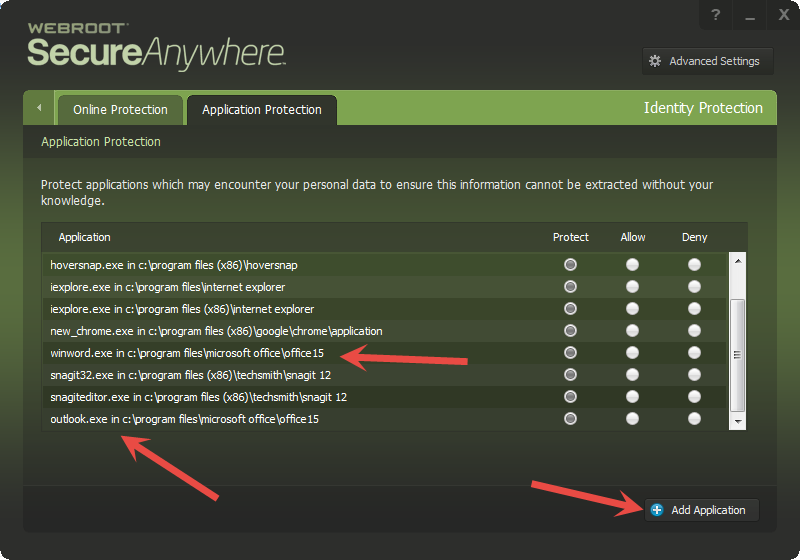Answer
Application Allow vs. Protect
Why would one assign Allow vs. Protect to an application in the Application Protection area of Identity Protection?
Best answer by RetiredTripleHelix
Correct here is some info I got from one of Webroot's Product Managers @ :
1. As you are undoubtedly aware, the Application Protection list serves two purposes· It can be used to designate processes whose data should be protected (the Protect column)· It can be used to designate processes that specifically are allowed or denied access to protected data (Allow and Deny columns)And yes a process cannot be both protected and allowed at the same time (not sure about a real world use case for protected and deny). While it seems more intuitive to have two separate lists, Protect and Allow/Deny, there may be developmental considerations that favor one list. If possible I would be in favor of two, but I don’t hear many others requesting enhancements to this area.I hope this is helpful and I appreciate you pointing out that discussion. If you have any other questions, please let me know.Thanks!BradAlso here is the Feature Request to ask for 2 lists if you like just Kudo the Topic as more Kudo's more of a chance to get into WSA. https://community.webroot.com/t5/Ideas-Exchange/Identity-Shield-Enhancements/idi-p/183620
Hope it helps,
Daniel 😉
1. As you are undoubtedly aware, the Application Protection list serves two purposes· It can be used to designate processes whose data should be protected (the Protect column)· It can be used to designate processes that specifically are allowed or denied access to protected data (Allow and Deny columns)And yes a process cannot be both protected and allowed at the same time (not sure about a real world use case for protected and deny). While it seems more intuitive to have two separate lists, Protect and Allow/Deny, there may be developmental considerations that favor one list. If possible I would be in favor of two, but I don’t hear many others requesting enhancements to this area.I hope this is helpful and I appreciate you pointing out that discussion. If you have any other questions, please let me know.Thanks!BradAlso here is the Feature Request to ask for 2 lists if you like just Kudo the Topic as more Kudo's more of a chance to get into WSA. https://community.webroot.com/t5/Ideas-Exchange/Identity-Shield-Enhancements/idi-p/183620
Hope it helps,
Daniel 😉
Login to the community
No account yet? Create an account
Enter your E-mail address. We'll send you an e-mail with instructions to reset your password.




